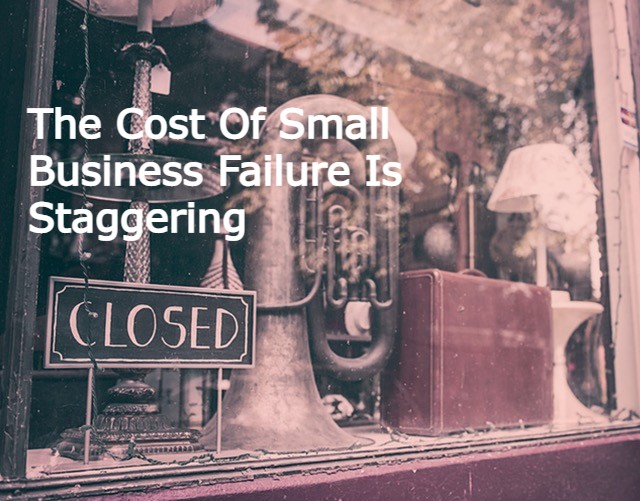The Real Cost Of Small Business Failure – Part One

The True Cost Of Small Business Failure
Here is totally new thinking regarding the nature of small business and the real cost of small business failure. This isn’t an attack on traditional thinking found within government agencies or schools. Neither is it an attack on other accepted entrepreneurial authorities. Instead, this is a comment on the more personal aspects of entrepreneurship; the real heart of the issue that goes completely addressed by government, financial institutions and educators year after year.
It’s a new perspective on solving a difficult problem. Old thinking about entrepreneurship and small business isn’t working and hasn’t worked for decades. It’s time to approach the problem of small business failure from a totally different position. It’s time to look at the real cost of failure in terms of the personal and financial devastation it causes on many levels. Perhaps knowledge of the suffering resulting from small business failure will lead to more new thinking.
Statistics Attest To The Real Cost Of Small Business Failure
Let’s begin our analysis with an often stated, yet unfortunately true, piece of information. According to the SBA, one-half of all new businesses will fail before they are five years old. Most of us who are interested in entrepreneurship have heard that statement many times. In fact, we hear it so often that we may become immune to its implications. And even for those who have experienced the bruises of entrepreneurship, the true meaning of that statistic doesn’t register until the actual numbers are considered.
The magnitude of the problem has impacted my thinking for a very long time. And eventually, the need to find a way for entrepreneurs to win more and suffer less became essential. That mission is the core of this article as well as the basis of a program, a system, and a methodology designed to reduce small business failure. A link to that online program and methodology is provided below.
Real Numbers To Consider
While percentages are one way of expressing statistics, those same statistics can take on greater meaning when we consider the actual numbers they represent. For example, if we state, and accurately so, that 5% of the total number of businesses in existence are start-ups, that percentage doesn’t sound particularly significant. But, to recognize that same 5% as 700,000 unique entities, the number takes on a whole new meaning. Surprised by the total number of U.S. start-ups? It’s a huge mass by any standard. (Note: There are somewhere between 12 and 14 million total businesses in North America, ranging from General Motors to Pete’s Ice Cream truck and includes every demographic of age, race, and economic level. The percentages, the numbers, and the facts touch every entrepreneur and every free enterprise. No demographic escapes the reality of small business start-ups and failures.)
Small Business Is More About People Than We Ever Consider – Unless We’re The Owner Or Employee
The goal here is to stop thinking about small businesses as inert objects and see the people behind and within them. The goal is to recognize the need find a way to help these brave individuals succeed more often than they do in our current framework of entrepreneurship. Of course there’s financial loss, but what about the real cost of time and human suffering?
The Focus Program for Emerging Entrepreneurs results from a lifetime of studying family, friends and clients in various stages of entrepreneurial success and failure. That system, that methodology, is a means of making better decisions about self-employment and small business ownership. Use this link to reach part Part Two of this article.
